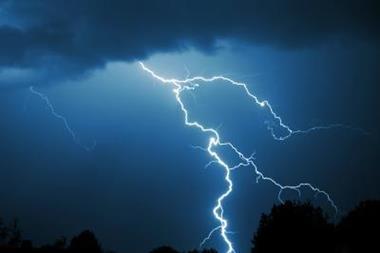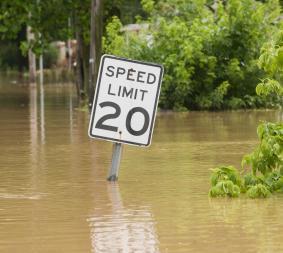A repeat of the 1938 New England Hurricane could cause losses as large as Hurricane Katrina in 2005. By Karen Clark
SINCE 1900, nine hurricanes have directly impacted the northeast United States including New York and New England. Most of these were relatively weak storms that did not cause a lot of damage. Recent examples are Hurricane Gloria in 1985 and Hurricane Bob in 1991 – both less than $1 billion events.
The landmark event for this region is the Great New England Hurricane of 1938. This storm destroyed tens of thousands of buildings, downed 20 million trees, left over 60,000 people homeless and caused over 600 deaths and 4,500 injuries. Scientists do not know the exact intensity of this storm and maximum sustained wind speeds are estimated at just 120mph (200 kph), but it was not its Saffir-Simpson category that made this storm so deadly and destructive.
The 1938 hurricane began as a Cape Verde tropical storm on 10 September. The storm was forecast to make landfall in south Florida before it suddenly changed direction and began moving north. By the time it reached Cape Hatteras, the hurricane was traveling at over 60mph. Long Island, Rhode Island and coastal Connecticut residents had no warning as they went about their business on what started out as a beautiful, sunny September afternoon.
There was no advanced meteorological technology, such as radar, radio buoys or satellite imagery at that time. Apparently, Charlie Pierce, a junior forecaster at the US Weather Service predicted that the hurricane was heading for the North East, but the chief forecaster overruled him, believing that the storm would die out when it encountered the colder waters of the North Atlantic. By the time the Weather Service learned the storm was headed directly for Long Island, it was too late.
Too late
When the storm arrived at 3:30 pm, it was high tide, and the tide was even higher than usual because of the autumnal equinox. Fifteen to 20 foot waves on top of a 16 foot storm surge created a 35 foot wall of water that destroyed virtually everything in its path. Because the storm track cut through eastern Long Island, the worst of the storm surge was in Narragansett Bay. Downtown Providence, Rhode Island was flooded with 14 feet of water. Coastal destruction from the storm surge was experienced from New Haven, Connecticut to New Bedford, Massachusetts, as well as on Long Island.
After landfall, the storm continued its fast track north and into Canada. The hurricane was big, with an eye radius estimated at over 50 miles – more than twice the average size of storms in the Gulf and southeast regions. It was over in eight hours, but the entire northeast region felt the effects of the Great New England Hurricane. It caused more damage than the 1906 San Francisco earthquake and remained the most costly US disaster on record until Hurricane Carol in 1954.
Moving quickly
While scientists are much better able to predict storm tracks today, hurricanes can change direction suddenly and unpredictably. The chances are that a Northeast hurricane will be moving at over 40mph – more than twice the speed of a typical hurricane in other coastal regions. This means the storm will travel from North Carolina to Long Island in less than 10 hours. That is very little time, particularly considering that the number of New York residents who live in vulnerable coastal areas and, therefore, would need to evacuate, has been estimated at up to 2.5 million.
There is also the question of how people will get out. The New York City Office of Emergency Management advises residents to use public transportation to reduce the volume of traffic and roadway congestion. But there could be a problem with this plan, because of the unique features of the New York coastline and, in particular, what is known as the New York Bight. This is where the New Jersey shore and the Long Island south shore converge almost perpendicularly to one another. If a hurricane traveling in a northwest direction made landfall near New York City, the Bight would funnel tremendous storm surge into Lower Manhattan as well as across Long Island, blocking many of the exit routes.
According to an Army Corps of Engineers study, even before such a storm made landfall, floodwaters could rapidly fill many subway and roadway tunnels. In 1992, a nor’easter that followed this track flooded parts of Coney Island, the FDR Drive and the suburban train PATH station at Hoboken.
The study found that a Category 3 hurricane in New York could generate a storm surge of 24 feet at the Battery Tunnel, 21 feet at the Lincoln Tunnel, 25 feet at JFK Airport, and 16 feet at LaGuardia Airport. Figure 1 shows that even a Category 2 hurricane could inundate significant areas of Long Island and New York City, including Manhattan.
The problems caused by this massive inundation would dwarf those caused by Hurricane Katrina in 2005. The storm surge from a major Northeast hurricane would not only cause billions of dollars of property damage along the coast, but is likely to cause multiples of that damage in business interruption, infrastructure, clean-up and recovery costs. Few, if any, of these impacts are explicitly incorporated into catastrophe models. Insurers and reinsurers can only use their own imaginations and scenario testing to estimate what their losses could be from this type of event.
While the insured wind damages are a bit easier to quantify, there is still a high degree of uncertainty. Because they tend to be so big and fast moving, Northeast hurricanes travel far inland, causing widespread localised damage. A major Northeast hurricane is likely to affect tens of thousands of square miles and cause between $15 and $50 billion of insured wind damage.
The range is wide because the insured losses depend more on the size of the storm and the storm track than on the maximum wind speeds. As with the storm surge, the further the track is to the west and the closer to New York City, the higher the losses will be, because of the higher number of properties on the more powerful right hand side of the storm.
So Saffir-Simpson category alone does not capture the damage-producing potential of northeast hurricanes. We have introduced our own tool for quickly assessing the likely insured damage from tropical cyclones, the KC Wind Damage Scale. It ranges from KC-0, for a storm with winds of less than 40mph in which negligible insured damage is likely, to KC-7, denoting a hurricane with winds in excess of 160mph.
The KC Wind Damage Scale, shown in Figure 2 for a repeat of the 1938 hurricane, provides insurers with information on the likely damage footprint.
In a repeat of the 1938 Great New England Hurricane, eastern Long Island and portions of Connecticut and Rhode Island are likely to experience wind speeds in excess of 100 mph. The KC-4 area (orange swath), will suffer widespread structural damage to wood frame, unreinforced masonry and light metal buildings. Even mid and high rise commercial structures will suffer significant roof, cladding, signage, window and contents damage. The yellow swath, indicating KC-3 damage levels, extends all the way into Vermont where there will be localised areas of roof, window and cladding damage along with extensive tree damage.
Every New England state except Maine would experience at least KC-2 damage levels. There would be extensive power outages throughout the region. It would take several weeks for power to be restored in the hardest hit areas. The insured losses could exceed $30 billion. This same storm with the track shifted 50 miles to the west could cause insured losses exceeding $50 billion.
Impacts of climate change?
For northeast hurricanes, the biggest risk posed by climate change is sea level rise. The most recent report from the Intergovernmental Panel on Climate Change (IPCC) gives a best estimate range of sea level rise of four inches to 2.9 feet by the year 2100. A study conducted by researchers from NASA and Columbia University projects a sea level rise of 15 to 19 inches by the 2050s in New York City.
According to one of the study’s authors: “With sea levels at these higher levels, flooding by major storms would inundate many low lying neighborhoods and shut down the entire metropolitan transportation system with much greater frequency.” With that level of sea level rise, a Category 3 hurricane would likely put most of Lower Manhattan, southern Brooklyn and Queens under water.
The IPCC report does not project an increase in hurricane frequency, but does project that maximum wind speeds in hurricanes could increase by 2% to 5% over the next 20 years.
Even with climate change, it is unlikely there will be a Category 4 or 5 hurricane in the Northeast, but this does not mean there will not be a devastating storm. We cannot be complacent because typical hurricane intensity scales really do not apply in this region. Even a large Category 2 storm with the right track could result in a $50 billion loss.
Postscript
Karen Clark is president and CEO, Karen Clark & Company. KClark@karenclarkandco.com www.karenclarkandco.com



















No comments yet